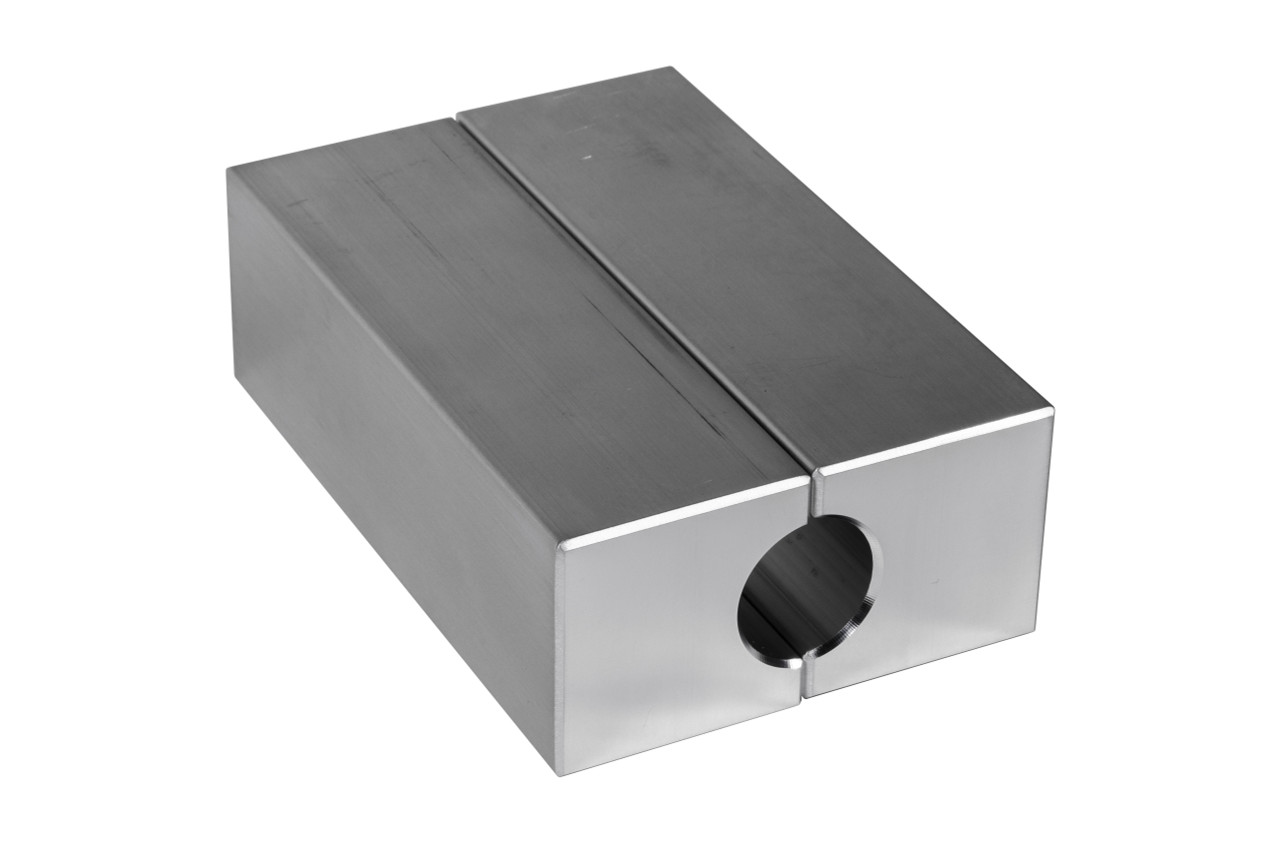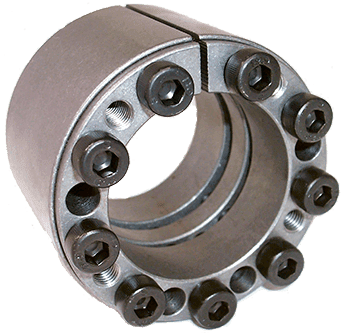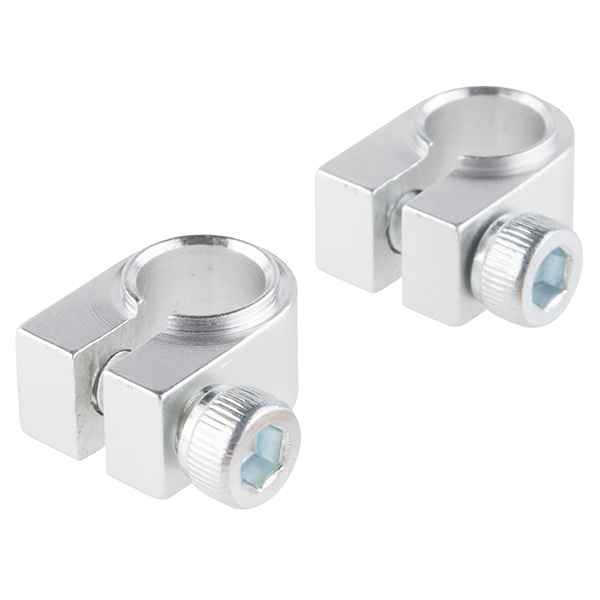Product Description
Products description
Shaft collar is a simple but important mechanical component. It is widely used in Power Transmission applications, such as motors and gearboxes. The Shaft collars are used as mechanical stops, locating components, and bearing faces. The simple design lends itself to easy installation
–Set screw type/ Set Screw Shaft Collar
–Single Split Collar / One-piece Shaft Collar
–Double Split Collar / Two-piece Shaft Collar
–One-Piece Threaded Collar
–Double wide shaft collar
Set screw type is the most effective when used on a shaft made of a material which is softer than the set screw.
Threaded shaft collars offer the same quality and benefits of smooth bore Collars, meanwhile providing additional features. Threaded collars provide axial holding power which is superior to smooth bore collars, while offering easier installation and adjustment than CZPT ring locking devices.
One-piece shaft collars wrap around the shaft for even distribution of clamping forces. This results in a tight fit and greater holding power, without the shaft damage caused by set screws. Clamp collars are easy to remove, indefinitely adjustable, and work well on virtually any shaft.
Two-piece shaft collars offer the same benefits as one-piece shaft collars with additional versatility and convenience. The split design is easily installed and disassembled, reducing labor and downtime when adjustment, removal, or replacement is necessary. These clamping forces provide the collar with a holding power superior to one-piece and set screw shaft collars.
Unik Shaft Collar Features:
Superior fit, finish and holding power.
Tightly controlled face to bore perpendicularity.
Bore size stamped on every shaft collar.
Black oxide finish produces holding power and resisting corrosion.
DIN 12.9 for metric screws for maximum torque ability.
black oxide and zinc-plated steel, Stainless Steel, Aluminum
FAQ
Q1. What is your terms of packing?
A: Generally, we pack our goods in single color box. If you have special request about packing, pls negotiate with us in advance, we can pack the goods as your request.
Q2. What is your terms of payment?
A: T/T 30% as deposit, and 70% before delivery. We’ll show you the photos of the products and packages
before you pay the balance. Other payments terms, pls negotiate with us in advance, we can discuss.
Q3. What is your terms of delivery?
A: EXW, FOB, CFR, CIF.
Q4. How about your delivery time?
A: Generally, it will take 25 to 30 days after receiving your advance payment. The specific delivery time depends
on the items and the quantity of your order.
Q5. Can you produce according to the samples?
A: Yes, we can produce by your samples or technical drawings. We can build the molds and fixtures.
Q6. What is your sample policy?
A: We can supply the sample if we have ready parts in stock, but the customers have to pay the sample cost and
the courier cost.We welcome sample order.
Q7. Do you test all your goods before delivery?
A: Yes, we have 100% test before delivery
Q8: How do you make our business long-term and good relationship?
1. We keep good quality and competitive price to ensure our customers benefit ;
2. We respect every customer as our friend and we sincerely do business and make friends with them,
no matter where they come from.
| Material: | Carbon Steel |
|---|---|
| Load: | Drive Shaft |
| Stiffness & Flexibility: | Stiffness / Rigid Axle |
| Journal Diameter Dimensional Accuracy: | IT6-IT9 |
| Axis Shape: | Straight Shaft |
| Shaft Shape: | Hollow Axis |
| Samples: |
US$ 0.8/Piece
1 Piece(Min.Order) | |
|---|
| Customization: |
Available
| Customized Request |
|---|

Can you provide examples of successful case studies where split collars improved machine performance?
Certainly! There are numerous case studies where the use of split collars has significantly improved machine performance and reliability. Here are a few examples:
1. Conveyor Systems Optimization: In a large manufacturing facility, the conveyor system used to transport heavy components was facing issues with misalignment and frequent maintenance due to traditional set-screw collars slipping on the shafts. By replacing these collars with split collars featuring precision clamping, the facility reduced downtime, improved alignment, and increased the overall efficiency of the conveyor system.
2. Food Processing Machinery: A food processing plant required collars for their machinery that met strict hygiene and cleanliness standards. They switched to split collars made from food-grade materials. This change not only ensured compliance with food safety regulations but also reduced the risk of contamination and improved maintenance due to the ease of disassembly and cleaning.
3. Agricultural Equipment: A manufacturer of agricultural machinery needed a solution for securing sprockets on rotating shafts. Traditional set-screw collars were causing shaft damage due to over-tightening. By using split collars with a self-locking mechanism, they eliminated damage to the shafts, reduced maintenance costs, and increased the durability of their equipment.
4. Industrial Mixers: A company that produced industrial mixers experienced frequent downtime and misalignment issues with their mixers’ shaft components. Switching to split collars with quick-release mechanisms allowed for faster maintenance and component replacement, reducing downtime and improving overall production output.
5. Aerospace Applications: In the aerospace industry, precision and reliability are critical. Split collars have been used to secure components in aircraft and spacecraft. Their ability to provide precise positioning and easy adjustment has improved the alignment of critical components, enhancing the overall performance and safety of aerospace systems.
6. Material Handling: Material handling systems in warehouses and distribution centers rely on conveyor rollers and pulleys. The use of split collars in these systems has simplified maintenance and reduced the need for specialized tools, resulting in cost savings and increased system uptime.
7. Medical Devices: Medical equipment manufacturers have turned to split collars for applications where precision and cleanliness are paramount. By using split collars with self-locking features, they have improved the performance of medical devices and reduced the risk of contamination in healthcare settings.
These case studies demonstrate how split collars have been successfully implemented in various industries to address specific challenges, improve machine performance, and enhance overall reliability. The choice of split collars has resulted in reduced maintenance, increased efficiency, and cost savings in these applications.

What are the design considerations when utilizing split collars in machinery?
When using split collars in machinery, several design considerations are essential to ensure optimal performance and reliability. Here are key design considerations:
- 1. Shaft Material and Diameter: Select split collars compatible with the material and diameter of the shaft. Ensure a proper fit and consider any tolerances required for the application.
- 2. Collar Material: Choose the appropriate collar material based on factors such as corrosion resistance, temperature tolerance, and environmental conditions. Common materials include steel, aluminum, plastic, and stainless steel.
- 3. Collar Type: Determine whether a single-split, double-split, or triple-split collar is required based on the application’s holding power and torque requirements.
- 4. Fastening Method: Consider the fastening method, whether it’s set screws, clamping levers, or other mechanisms. Select the method that provides the necessary grip and ease of adjustment for your machinery.
- 5. Load and Torque: Calculate the anticipated loads and torque that the collar will need to withstand. Ensure the selected collar is rated to handle these forces without slippage or deformation.
- 6. Alignment and Precision: Proper alignment of split collars is crucial for accurate positioning of components on the shaft. Misalignment can result in uneven pressure and reduced performance.
- 7. Space Constraints: Assess space limitations and choose a split collar design that fits within the available space without interference with other components or machinery elements.
- 8. Environmental Conditions: Consider the operating environment, including temperature extremes, moisture, chemicals, and potential contaminants. Select collars with suitable coatings or materials to resist environmental factors.
- 9. Maintenance Access: Ensure that split collars can be easily accessed for maintenance and adjustments. Quick installation and removal are beneficial for reducing downtime during servicing.
- 10. Reusability: Determine whether the collars need to be reusable for frequent adjustments or if they are for one-time use. Reusable collars are designed for multiple installations and removals.
- 11. Industry Standards: Check if there are specific industry standards or regulations that apply to your machinery. Ensure that the chosen split collars meet these standards for safety and compliance.
- 12. Material Compatibility: Verify that the material of the split collar is compatible with the components it will contact on the shaft. Avoid materials that may cause galvanic corrosion or chemical reactions.
By carefully considering these design factors, you can select the right split collars for your machinery, ensuring they provide secure, precise, and reliable performance in your specific application.

What factors should I consider when choosing a split collar for a specific shaft size?
Choosing the right split collar for a specific shaft size is crucial to ensure a secure and reliable connection. Several factors should be considered during the selection process:
- 1. Shaft Diameter: Measure the diameter of the shaft accurately. The inner diameter of the split collar should match the shaft size precisely to ensure a proper fit and grip.
- 2. Collar Material: Select a collar made from a material suitable for your application. Common materials include steel, aluminum, and stainless steel. Consider factors such as strength, corrosion resistance, and environmental compatibility.
- 3. Shaft Material: The material of the shaft is important, as it affects compatibility with the collar material. Ensure that the collar material is compatible with the shaft material to prevent galvanic corrosion or excessive wear.
- 4. Environmental Conditions: Consider the operating environment. If the application is exposed to moisture, chemicals, or extreme temperatures, choose a collar with the appropriate corrosion resistance and environmental seals if necessary.
- 5. Load and Torque: Determine the load and torque requirements of your application. Select a split collar that can handle the expected forces without deforming or slipping on the shaft.
- 6. Collar Type: Choose the appropriate collar type, such as a single-split or double-split collar, based on your application’s requirements. Double-split collars provide greater holding power but may require more space on the shaft.
- 7. Locking Mechanism: Different split collars use various locking mechanisms, including set screws, clamping screws, or levers. Consider the ease of installation and removal, and the effectiveness of the locking mechanism for your application.
- 8. Space Limitations: Evaluate the available space on the shaft. Ensure that the split collar can be installed without interference from adjacent components or other collars on the same shaft.
- 9. Reusability: Determine if the split collar needs to be reusable. Some collars can be removed and reinstalled multiple times, while others may be designed for permanent installations.
- 10. Precision Requirements: For applications requiring precise positioning, choose a split collar with tight tolerances and accurate machining to ensure proper alignment of components.
- 11. Special Features: Some split collars offer additional features, such as vibration damping, environmental sealing, or keyways. Assess whether these features are necessary for your application.
- 12. Budget Constraints: Consider your budget and the cost of the split collar. While quality is essential, it’s important to find a balance between performance and cost-effectiveness.
By taking these factors into account, you can make an informed decision when choosing a split collar that suits your specific shaft size and application requirements.


editor by CX 2023-11-09